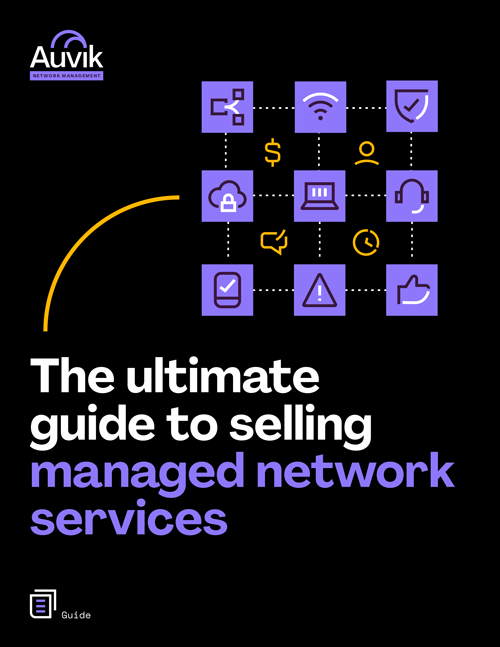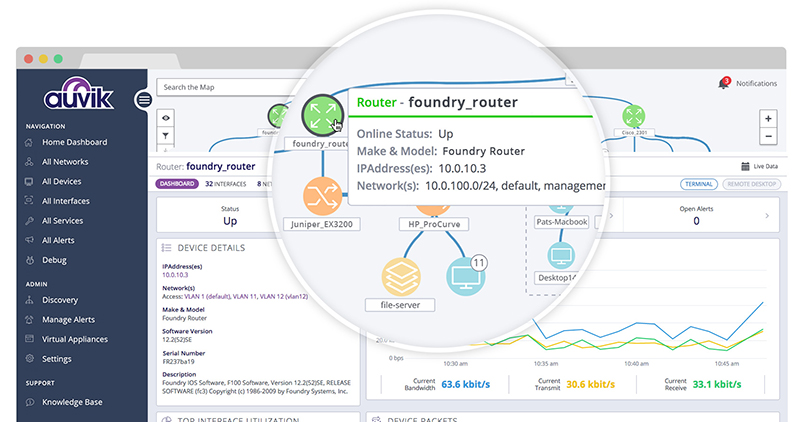Sometimes we associate fast-growing networks with power and success, but being small doesn’t mean you can’t compete—you just need to be smarter at creating a sustainable competitive advantage.
Here are 10 things you can do as a small managed service provider (MSP) to punch above your weight.
1. Document all the things
A documented process is a consistent process. And once you document how a process is carried out, you can then look for ways it can be improved. So process documentation also promotes quality and efficiency.

Document everything! From your client onboarding process to your new hire training, consistent processes turn your company into a lean-functioning machine. They’re also the first step on your way to automation, which brings us neatly to tip #2.
2. Automate as much as possible
Profitable MSPs rely on automation to scale efficiently. At a minimum, you’ll need a good PSA tool to handle ticketing and other business tasks, along with strong RMM systems to monitor and manage your client networks.
For truly sustainable competitive advantage, your RMM should automate as many time-consuming network tasks as possible, such as automatically discovering and mapping networks, completing network inventories for you, documenting connection details between devices, alerting you to potential misconfigurations on a network, and so on.
In your PSA, you can build workflows to auto-triage tickets based on the criteria you specify. That means someone on your team no longer has to do the manual work of reviewing, prioritizing, and assigning tickets as they flow in. You save time and eliminate a potential bottleneck.
Studies show that service providers running business systems such as PSA and RMM tools command higher rates, renew more clients, spend less time on data management, and are overall more profitable than companies without automation support.

Your Guide to Selling Managed Network Services
Get templates for network assessment reports, presentations, pricing & more—designed just for MSPs.
3. Integrate your systems
As we’ve just seen, automating your processes is a fantastic way to save time. To maximize that efficiency, though, you’ll also want to ensure that your various automation systems are talking to each other and working in concert. That cuts down on task duplication and manual data entry.
For example, your network alerting and monitoring tools can be synced to your ticketing system along with any messaging and pager apps. Inventory and configuration details can be synced from a network management tool to your PSA.
Whenever possible, adopt cloud-based tools that are platform-agnostic and have hooks to complementary systems already built in.
4. Standardize the technologies you support
There are hundreds of network and computing vendors who between them offer thousands of models of gear. If you tell clients you can support anything, you’ll quickly blow your brains out trying to keep up. You won’t be able to build deep domain expertise, realize efficiencies, or even offer clients the best possible service.
The most productive MSPs make their clients standardize to a core set of supported technologies. That means telling the client, “If you work with us, you need to have this kind of firewall, this kind of server, these kinds of routers. We use this backup technology and this cloud platform.”
It may seem scary at first like maybe your clients and prospects will revolt if you tell them they need to standardize. But MSPs with a sustainable competitive advantage have that conversation and have it successfully. You need to do it too.

5. Monitor the whole network
Monitoring servers and endpoints are important, of course. But don’t forget about infrastructure. Routers, switches, firewalls, and other packet pushers form the very heart of a network, and troubles in those areas can quickly bring a whole business down.
You need clear and instant visibility into every infrastructure device—and typing ‘show’ commands into devices, one by one by one, and parsing what comes back doesn’t cut it. If you want to be a contender in your market, a tool that provides automated monitoring and management of network infrastructure is a must.
6. Document the whole network
If you’re not properly documenting your client networks, you’re most likely throwing away thousands of dollars every month. Experts peg the amount of time wasted due to lack of helpful documentation to be as much as 30% of working hours. That’s up to 12 hours out of every week—per technician—creating topology maps, figuring out device configurations, and hunting for passwords during the heat of troubleshooting.
How much faster could you close tickets if you had complete and up-to-date documentation anytime a technician needed it? How much more revenue could you generate with 600 hundred extra hours a year for every technician? Even if you could monetize only a fraction of that recaptured time, the number should get you thinking.

7. Be proactive
“When you take a reactive approach to provide IT solutions, you fail to provide the level of service your clients deserve and you overwork your employees,” says TruMethods president Gary Pica. “The key to taking control of your business is moving to proactive network management.”
Being proactive means knowing what’s happening with a network and every device on it at all times so you can spot small problems before they become big. Foresight cuts down on incoming tickets that keep you in constant reaction mode and helps you provide forward-looking recommendations to your clients about investments they need to make.
Another way to find your sustainable competitive advantage: Get creative! With a bit of brainstorming, you can come up with some really clever hacks to save you time and tickets. For example, one MSP we work with added an IP-enabled power bar called a WattBox to each of their client networks. The power bar pings the Internet, and if there’s no response, automatically reboots the cable modem.
8. Move away from break-fix
IT infrastructure requires constant expert care to be effective. So the break-fix model—having your clients waiting for something to break, then calling you to fix it—hurts both your business and theirs.
You never know when a call or ticket will come in, but when it does, you’ve got to hop. That could mean paying techs premium rates to work odd hours. At the very least, it means constantly racing against the clock to find problems and get rid of them. To compete with the best, you’ll want to fix things on your own time, not when you’re under the gun from the client.

9. Get agile
Consider incorporating agile methodologies into your MSP. Long a staple in software development environments, agile is now being introduced into managed services by innovative MSPs such as Liberty Tech — with fantastic results. Liberty was able to cut its open ticket count in half in just six weeks, while simultaneously boosting its customer satisfaction score using agile principles like these:
- Using Kanban to visually display work in progress and quickly identify roadblocks
- Beginning every day with a 15-minute standup meeting
- Finding a communication tool, like Slack, that can help teams communicate seamlessly with each other
- Having the service team plan what they’ll implement in two-week sprints
Even smaller companies can adapt these principles to their environment.
10. Invest in branding
One of the easiest ways to look like a big fish? Invest in your brand. Hire a professional to create your logo and design your business cards. Spend the money to get a well-written and well-designed website. (You’re a tech company. And though you may not be the kind of tech company that builds websites, your clients see a dated or ugly website and think, “Oh, not very sophisticated.”) Invest in producing a few pieces of kick-ass marketing collateral, such as slide decks and PDF handouts.
All this doesn’t have to cost you an arm and a leg either. There are loads of talented writers and designers at affordable prices on markets like Upwork and 99designs. Really, there’s no excuse for not showing your best face.
You don’t need a big team or deep pockets to be a successful MSP, just smart ways to create a sustainable competitive advantage. Standardize, document, automate, and integrate. Be vigilant and proactive. If you work smarter, not harder, you’ll be able to compete with the best of them.
To test Auvik’s remote management features for yourself, sign up for a free 14-day trial and get full access to your network from the comfort of your desk.


